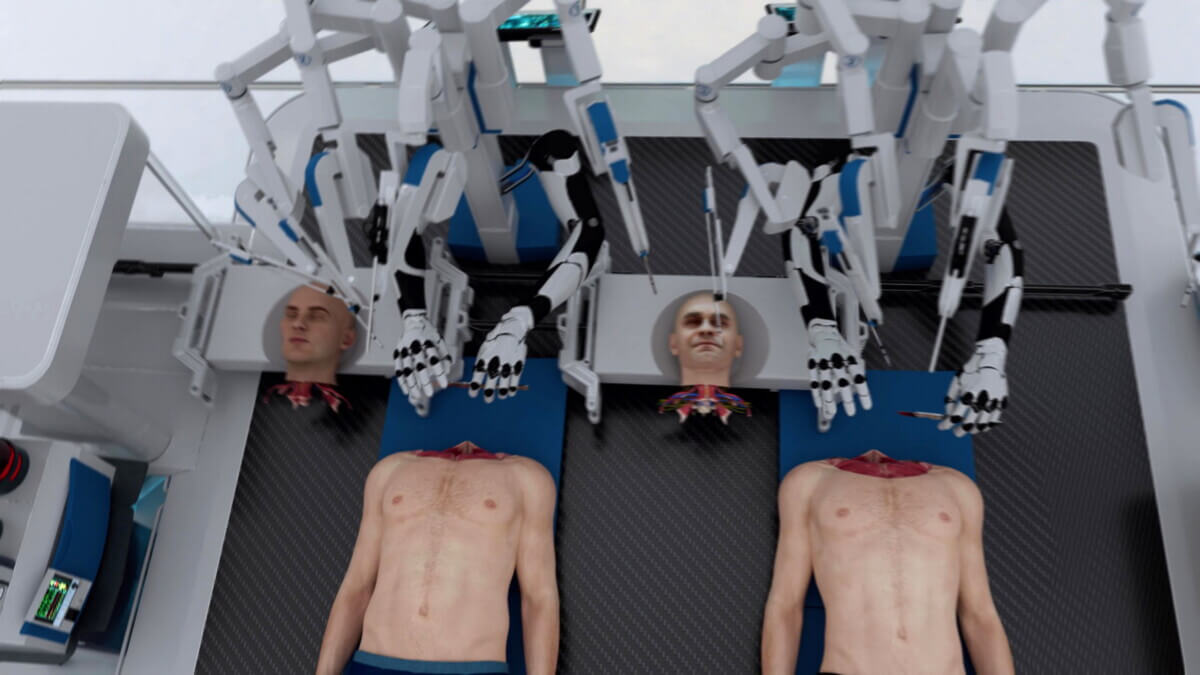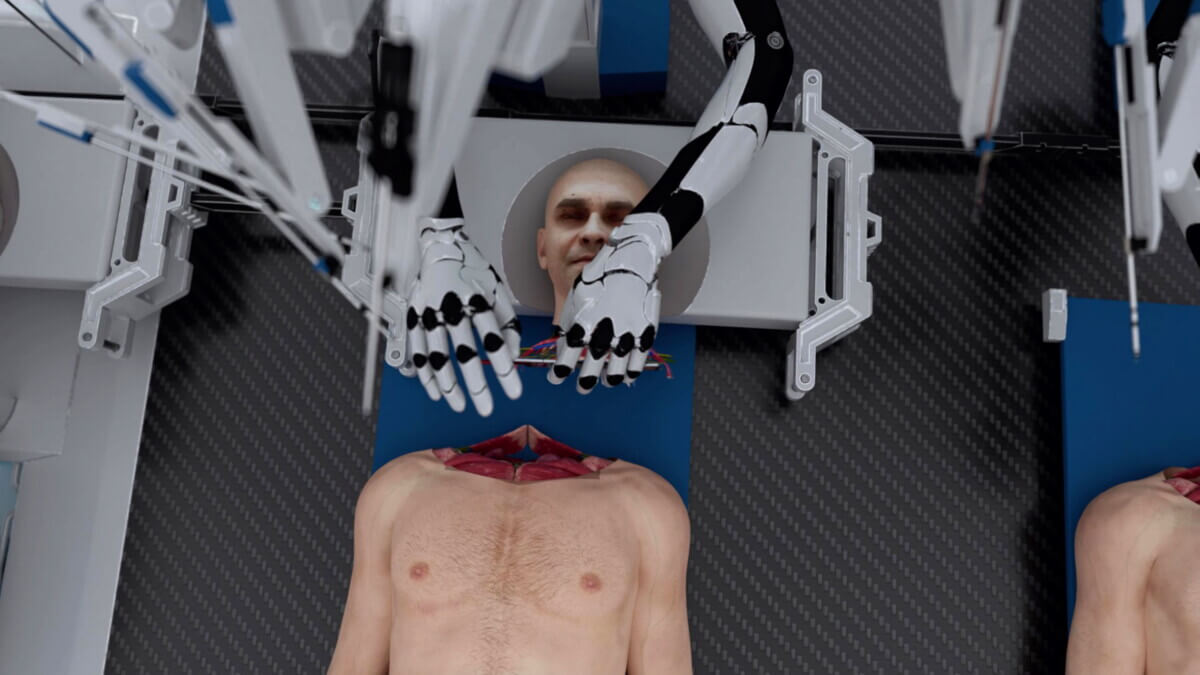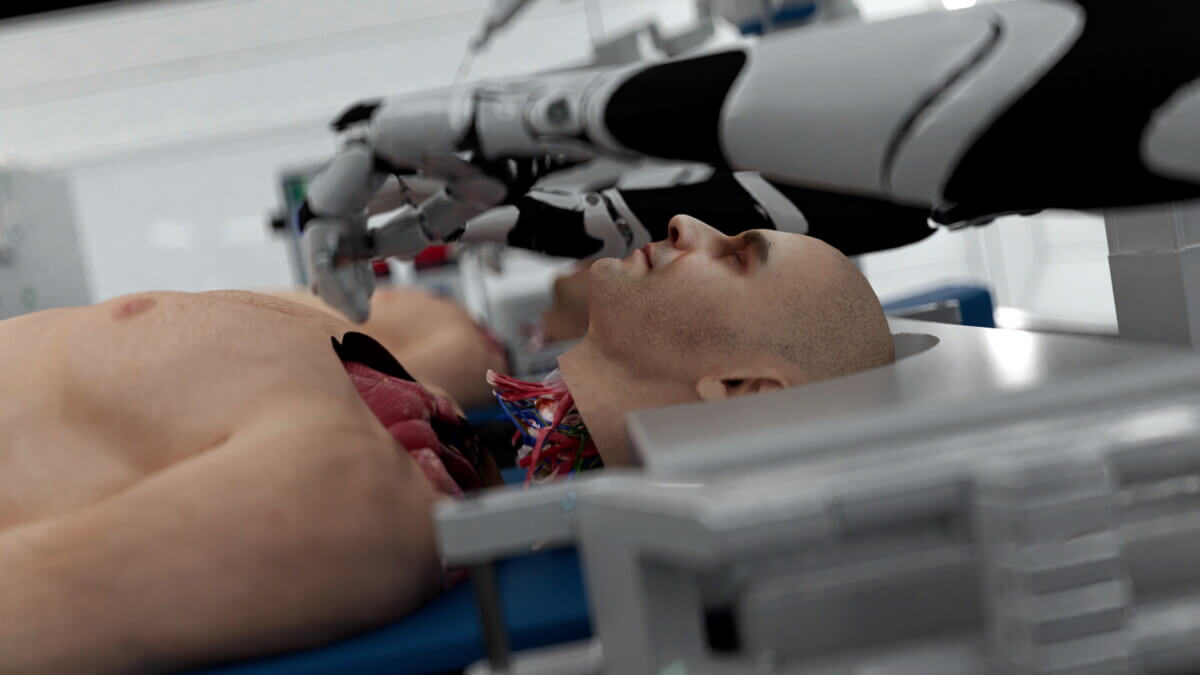DUBAI — The molecular biologist who made headlines for his highly controversial “artificial womb” concept is once again turning heads with another eye-popping design: the world’s first head transplant system. Hashem Al-Ghaili, a Dubai-based scientist and filmmaker, now aims to help push forward the idea of transplanting a head onto a donor body for individuals suffering from cancer or paralysis. As farfetched as it looks and sounds, his recently released video explaining the tech, which he dubs “BrainBridge,” is already getting plenty of attention.
BrainBridge’s proposed head transplantation process involves attaching a patient’s head onto a brain-dead donor body, with the goal of preserving the patient’s consciousness, memories, and cognitive abilities. Al-Ghaili boldly asserts that the procedure could be available within eight years, thanks to the integration of advanced robotics and artificial intelligence.

“Every step of the BrainBridge concept has been carefully thought out based on extensive scientific research that has been conducted and published by experts in various fields of science,” he says in a statement. “The goal of our technology is to push the boundaries of what is possible in medical science and provide innovative solutions for those battling life-threatening conditions. Our technology promises to open doors to lifesaving treatments that were unimaginable just a few years ago.”
While the prospect of a potential way to avoid paralysis or early death from terminal diseases is undeniably tantalizing, the concept of head transplantation is laden with ethical dilemmas. The procedure raises fundamental questions about personal identity, bodily autonomy, and the very definition of death. Would a person with a transplanted head still be considered the same individual? What rights would the donor body have? These are just a couple of the thorny philosophical quandaries that arise when contemplating such a radical intervention.

Moreover, the physical feasibility of head transplantation remains highly questionable. Despite BrainBridge’s claims of employing “advanced high-speed robotic systems” and “real-time molecular-level imaging,” the sheer complexity of the human nervous system presents formidable challenges. The spinal cord, a delicate bundle of nerves that transmits signals between the brain and the body, is notoriously difficult to repair once severed. Reconnecting the spinal cord, nerves, and blood vessels with the precision required for a successful head transplant is a feat that many experts believe is currently beyond the reach of medical science.
Even if the technical hurdles could be overcome, there are no shortage of post-operative challenges. The risk of rejection, whereby the recipient’s immune system attacks the donor body, is a significant concern. BrainBridge’s assurances of a “comprehensive post-operative care schedule,” which includes the patient remaining in a medically-induced coma for at least a month, would do little to allay fears of potentially life-threatening complications.

Nonetheless, Al-Ghaili released an eight-minute video (posted below) showing exactly how he envisions BrainBridge will work. The 3D animated clip, which feels more like a movie trailer, shows two robotic surgical machines with human-like arms and hands removing the head from the patient’s body and then placing it onto a previously brain-dead donor body. BrainBridge notes in the video that they believe a human brain could last “several hundred years provided that the rest of the body remains young.”
The video goes on to describe the process in detail, including how the system would reconstruct all of the detached spinal cord and other organs, nerves, blood vessels, etc. that were severed during the surgery. It also points out the lengthy rehabilitation that a patient would need to undergo afterward.
One commenter on the video wrote, “As a PhD in translational medicine, I see a lot of BS for attracting investments only. What ‘advanced real-time molecular [imaging] techniques’? How [do] they ensure 360° observation and manipulation during [the] procedure? There is a ton of research into autonomous, fully robotic suturing and ligation, but I don’t think there is one that could do what is required for this demo. Human anatomy might differ drastically, not only by size, but also blood vessel, muscle, etc structures.”
Another viewer commented, “We’re 100 years away from solving the complex connections required to pull this off.”
Al-Ghaili made headlines back in 2022 when he introduced the concept for “EctoLife” a facility that could house thousands of “artificial wombs” for women unable to carry a baby to term. He envisions technology that would allow parents to genetically engineer an embryo before implanting it into the artificial womb. This would allow them to design everything from eye and hair color to strength, height, and even intelligence. The idea was met with great skepticism as well as similar ethical questions, and many believed it to be a hoax.
BrainBridge will likely see similar scrutiny, and already comments left on the video purport it to be nothing more than science fiction. Even so, we’d also expect there will be scientists, investors, and even prospective patients who would love to be at the forefront of such a revolutionary innovation.

